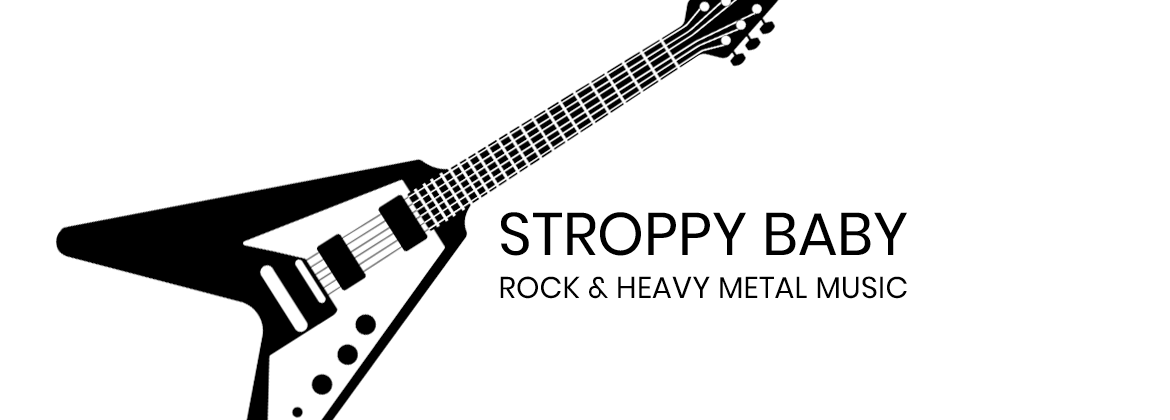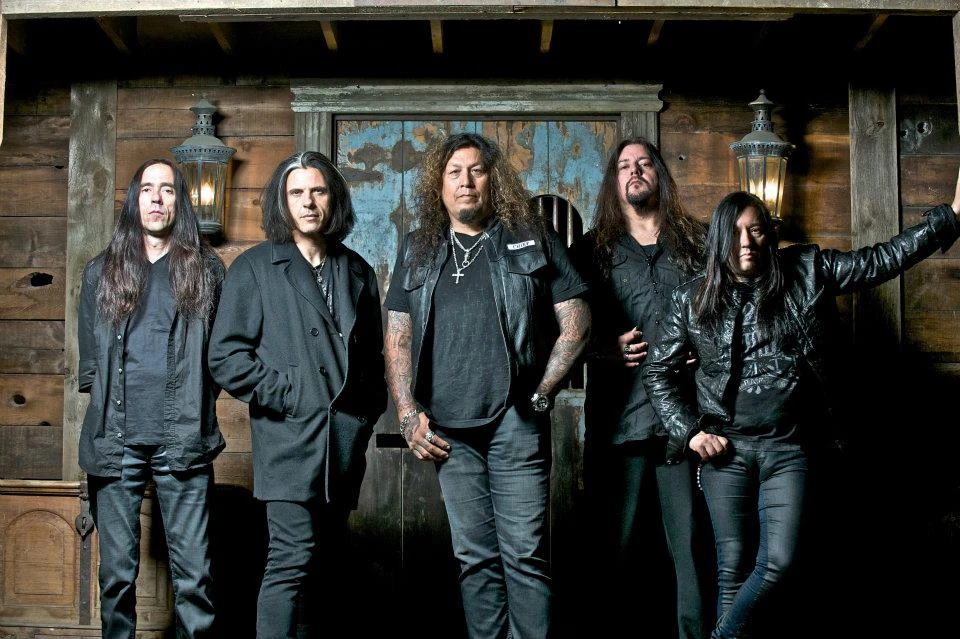San Francisco, Bay Area thrash metal titans Testament will be in Australia as part of the mammoth touring festival known as Soundwave, as well as headlining some Sidewave shows. Following on from their most recent live DVD release that documents their most recent ‘The Dark Roots Of The Earth’ album tour, the band will once again be delivering a thrashing good time with their powering twin guitar attack force to Australian audiences. Around the time of the DVD release, Australian Guitar’s Paul Southwell chatted to the erudite and multi-talented guitar virtuoso Alex Skolnick about Testament, guitars, amplifiers and a shred guitar magazine trip down memory lane.
ag: With so many songs in the back catalogue, how do you come up with a setlist to please everyone? Have your classic songs changed over the years in a live setting?
It is not easy. There are a couple of essential songs that just work. You have to play what you enjoy and what the crowd wants so it is a balance. A lot are time tested live and we know how they go over. We have to do songs from the record we’re promoting and songs that transition into the other songs. You don’t want to do too many songs that are alike with the same rhythm. The group has been through different line up changes and I was out for a long time. Having different players in the band has affected songs. For example, having Gene Hoglan on drums now who brings his own individual style will affect the songs that were played by a very different drummer. Technology has affected the songs in a good way. It used to be a struggle to get an effective guitar tone. Now, amplifier manufacturers make it easier to get a good tone and more PA systems can handle it. Our old songs played today are a better experience audio wise. In the 80’s we were using gear that was designed for Foreigner and Toto through that generation of PA systems. It wasn’t ready for Slayer and Metallica as it wasn’t an established sound. Now we have Slipknot, Lamb of God and even mainstream groups like Linkin Park, all with elements of that sound. Manufacturers had to follow that to get equipment buyers.
ag: How does your Budda [AS Preceptor 120W] signature amplifier compare to say modified Marshalls and Mesa Boogies?
It is a combination of many different amps. It has a clean channel that works for improvisation but also allows clean heavy metal type rhythms that are crisp. No matter how loud you get it, it doesn’t break up. That was a problem with the old Marshalls, trying to get a good clean sound. Mesa Boogies always had great clean sounds but I was never crazy about their overdrive sounds. I preferred the grunt of a Marshall. A Budda amp also combines tube and solid state technology. It has a lot of overdrive and a master boost so that no matter what channel you are one, you can boost the volume which is very handy for playing very tight solos when your front of house engineer might not know the set list that well. With the boost switch, I am able to make sure that the solos get heard by the audience. That is very important.
ag: Would you say you intentionally use equipment that is slightly different to what Eric [Peterson – Testament guitar] is using in a live setting to also help differentiate the guitar sounds?
I think so, yeah. He used to be more of a Mesa Boogie player but now he plays EVH amps. Those amps don’t work for me either but they sound great for him. That is his sound. I have always had a slightly lighter sound with a bit more high end and crispness about it. That cuts through as the sounds have to work together. Before using Budda amps I was using a Marshall Mode IV which I liked a lot but Marshall stopped making those amps. I also liked their JCM2000 but they stopped making that too. Why stop making a great product? Anyway, Budda approached me and they were receptive to build me any amp that had all of the qualities that I was looking for in current amps.
ag: Your jazz education must impact on the tonalities you expect from the amp?
Oh absolutely. For my jazz stuff I was already using a Budda combo amplifier. Back then they didn’t have a high gain amp that I liked but they worked with me on it. I worked hands on with the engineers. I would play and they would make changes with soldering irons at capacitors to dial in the sound that worked well. It really is a combination of a jazz amp and a metal amp but you can do pretty much anything on it like blues and classic rock. Everything on it serves a purpose to get different sounds.
ag: You’ve gone from Heritage to ESP guitars ESP [2014 released ESP Alex Skolnick EC and ESP LTD AS-600]. Are you still using Heritage guitars for jazz?
I quite value Heritage guitars and don’t want to talk them on the road. They are collectibles. I have a Heritage H575 that I’ve recorded four jazz albums on and taken it around the world so I want to retire it. They are wonderful and rare guitars. For the jazz stuff I’ve been using a Godin and they make a terrific guitar called the ‘5th Avenue’ and I also don’t want anything to happen to it in travel or get knocked off a rack at a festival but they can be replaced so Godin have become my active jazz guitars, keeping the Heritages at home. ESP was a pleasant surprise. They told me over the years that the door was always open but I was coming from a place of Les Pauls and Heritage guitars which is a very different mindset. I always associated ESP with Bruce Kulick and George Lynch who are great players but very different. Anyway, we talked and ESP understood where I was coming from and rose to the challenge to build an instrument that matches what I liked about other guitars but it won’t be a rare in terms of availability and production. I started working with a manager [Sharon Richardson] who worked with ESP on behalf of Gus G [Ozzy Osbourne / Firewind]. She talked to them officially and so we came up with something that has qualities of guitars I liked and the ESP Eclipse line which is a good line of guitars that I had not really been aware of at the time. I also had not been aware that they make good, classic style Les Paul based models that are mostly available in Japan. There was just so much that I didn’t know about ESP.
ag: Are the ESP guitars changing that way you write solos compared to when you played Ibanez guitars years ago or is it still the same attitude or approach?
I don’t think it effects how I do the solos. If it does, it has to do with the fact that I use D’Addario 12-52 gauge strings now. Part of the reason was because when I found myself switching from jazz boxes to solid body guitars, I didn’t want it to feel a drastic change. In the old says I was playing this very thin little Ibanez with thin strings but my playing just developed differently. Now the strings and the guitars are thick so that the sound is thicker. I’m sure it does affect the solos but nowadays it is just so natural with the type of gear that I have since gravitated towards. I’ve never had a desire to use a baritone guitar. I am just very comfortable with six strings and being able to switch between similar style guitars. I realised that some of my favourite players or sounds came from guys who just had minimal effects and flashiness. A good example of that is Gary Moore who was just a pure guitar player and his big influence was Peter Green. They were guys who had a Les Paul and an amp. That is all they needed. Michael Schenker is a very natural player. Also, Warren Haynes and Joe Bonamassa. There is no heavy processing or effects that get in the way, there is nothing but pure tone. So, whatever guitar I play has to have that quality. I wasn’t sure if ESP could deliver on that level but on this guitar that I’ve picked they have done.
ag: What are your recollections of appearing on the cover of 10th anniversary issue of the since bought out ‘Guitar For The Practicing Musician’ magazine cover way back in late 1993, alongside huge names in guitar playing?
Oh, yeah, that was really interesting in a lot of ways, even strange (laughs). There was Joe Satriani, whom I had studied with and not that much longer after I had been his student and there were are, on this guitar magazine cover together. There was Kirk Hammett [Metallica] and the Black album had just come out so he was about to become a lot more famous than he already was and that was pretty famous. Dave Navarro [Jane’s Addiction] wasn’t in a good place at that point with some personal issues which he got over later but he seemed a little withdrawn. It was exciting to meet him though and he was a very exciting new player. Then there were guys like Jake E. Lee how was about to disappear and he has only recently resurfaced and there was Michael Schenker. I remember I very excited to meet Michael Schenker. It was a strange experience in a way because some of these guys that I had listened to and really looked up to were all together and not with their bands so I was just experiencing them as people. Some of them were really nice and down to Earth and some seemed troubled. Jake E Lee seemed troubled because how else could somebody be one of the most visible guitar players on Earth playing for Ozzy having replaced Randy Rhoads and then to just disappear? What is that? I don’t understand that and this was right before that happened. I was really young then being in my early twenties so it was exciting yet curious.
ag: I would have thought the vast majority of people there would have been pointing at Michael Schenker as being a massive guitar playing influence.
Oh, he was a huge influence but at that time he seemed a little troubled too. He was really nice and outgoing yet I couldn’t help but feel that something was a little off. Later on I heard that he did have some personal issues that went on. Anyway, it is a strange thing to feel when you’re young and you’re just looking at these guys on pictures on albums. They just seemed like idols. But then you meet them as people and you realise they are flawed just like anyone else.
ag: Thanks for your time. We’ll see you on tour soon.
You will, we’re looking forward to it.

